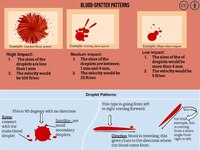
Photo from wikipedia
Abstract This study was performed to determine the optimum conditions for spray drying microencapsulation of olive pomace extract, in order to stabilize its phenolic compounds using maltodextrin as carrier material.… Click to show full abstract
Abstract This study was performed to determine the optimum conditions for spray drying microencapsulation of olive pomace extract, in order to stabilize its phenolic compounds using maltodextrin as carrier material. To this purpose, a comparison optimization study was performed using Response Surface Methodology or Artificial Neural Network, which revealed better prediction accuracy of the former. Maltodextrin concentrations (100–500 g/L), inlet-drying air temperatures (130–160 °C), feed flowrates (5.0–10.0 mL/min), and drying compressed air flowrates (20–32 m3 h−1) were tested as the independent variables according to a Central Composite Face Centered design, and the results of microencapsulation yield, moisture content, water solubility, specific total polyphenol content, specific antioxidant activity and encapsulation efficiency were elaborated. Under optimal conditions, these responses varied in the ranges 65–82%, 9–14 g/100 g, 64–65%, 38–52 mgCAE gDM−1, 230–487 μgTrolox gDM−1 and 85–92%, respectively. The same optimization regions for operative parameters were obtained using Response Surface Methodology or Artificial Neural Network. The results demonstrated that maltodextrin-based microcapsules containing olive pomace extract can effectively be produced by spray drying with good stability under storage conditions, and suggest that their remarkable antioxidant activity may be exploited to improve the properties of functional foods or pharmaceutical products.
Journal Title: Lwt - Food Science and Technology
Year Published: 2018
Link to full text (if available)
Share on Social Media: Sign Up to like & get
recommendations!